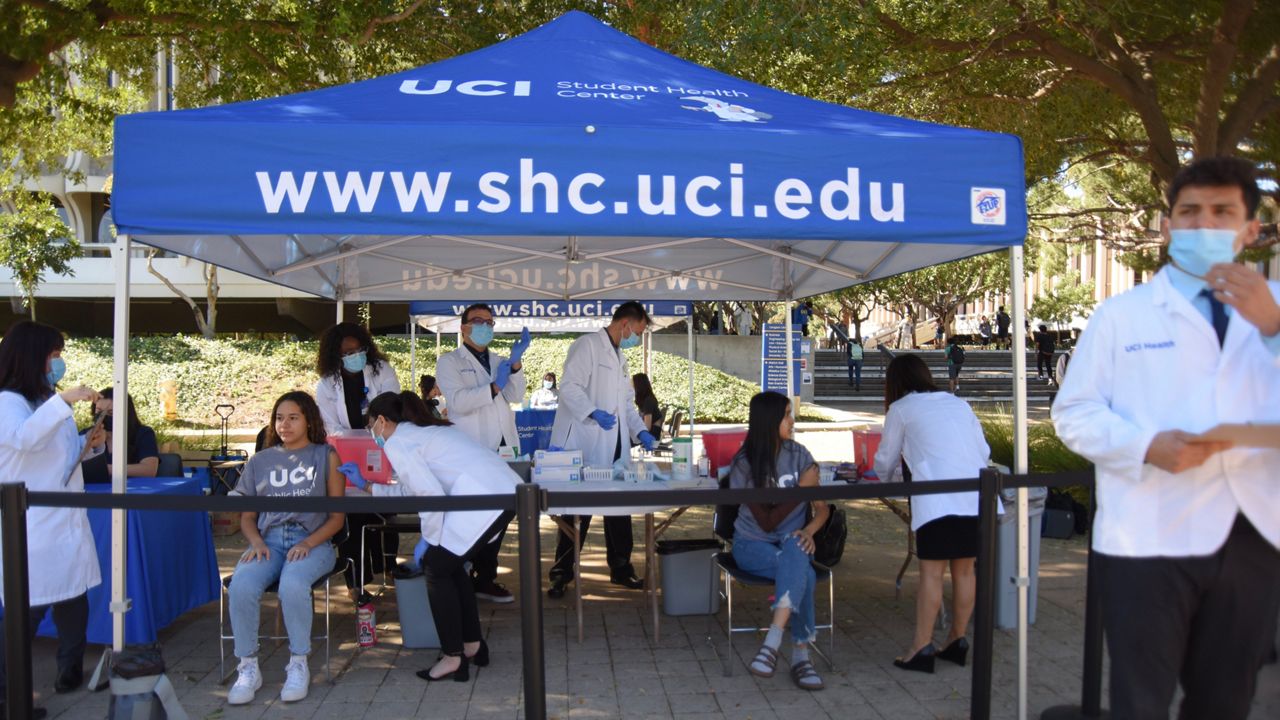IRVINE, Calif. — In early November, population health and disease prevention expert Andrew Noymer thought rumblings of a “tri-demic” were premature.
“I have since revised my thinking,” Noymer, a professor at University of California, Irvine, said. “Different age groups are getting different bugs, but that being said, I think we’re now in a tri-demic.”
At the time, RSV had been on the rise and, most worryingly, sent toddlers to the emergency room, a rarity before this year.
Fears once held by health officials and experts have been realized: three respiratory illnesses have made people sick in droves. Data from the Centers for Disease Control and Prevention show RSV case rates have spiked unusually early, with peak numbers usually landing in February. Flu often has a similar timeline, striking early in the year, while the surge in COVID-19 case rates is similar to past years.
The triple threat of respiratory illnesses hits the nation as its collective immune system is still recovering from pandemic social distancing.
Noymer suggests an “immune deficit” is one reason that numbers for all three illnesses could be so high. When people stayed home, there was less exposure to viruses. Now, those viruses may be making up for lost time. But he cautions there’s still a lot we don’t know and won’t know until more time passes.
“I still find 'tri-demic' a little bit of a sensationalist term, but we are experiencing peaks of three diseases all at the same time. It’s putting a strain on hospitals, and RSV is particularly putting a strain on children’s hospitals,” Noymer said.
The Orange County Health Care Agency reports 3,690 positive COVID-19 cases this week, a number that does not include at-home tests. Of that number, 299 have been hospitalized.
RSV numbers have also been high in Orange County, although data from the CDC show that statewide levels are similar to past seasons.
“The worry is that RSV could form some huge plateau instead of just peaking and falling, and that it could actually peak higher to something unprecedented. Right now, all we know is that it’s peaking early,” Noymer said.
The silver lining is that prevention measures for all three illnesses are similar: stay up to date on vaccines, social distance when possible, mask properly and stay on top of hand washing.
However bad it gets, David Souleles, director of the public health response at UCI, said he doesn’t think distance learning will return.
“I think it would, in my estimation, be pretty catastrophic if we had to return to remote learning,” he said. “I don’t see that being on the table at this juncture, but nothing is out of the question.”
With students heading home for the holidays, he worries about what they may bring back. But Souleles believes the campus is well prepared. Students and faculty are required to get flu and COVID-19 shots and any recommended boosters.
“It’s feeling like it’s going to be a pretty long and pretty severe season of respiratory illnesses,” he said.
To prepare students, Souleles and the university set up pop-up vaccination clinics, inoculating 1,900 students with flu shots. Souleles, who also coordinates the COVID-19 response for the university, has helped set up similar programs to draw in faculty and staff.
Otherwise, Souleles’ thinking about the start of next semester is just like it always is: “I’m always nervous when people come back from breaks,” he said.



